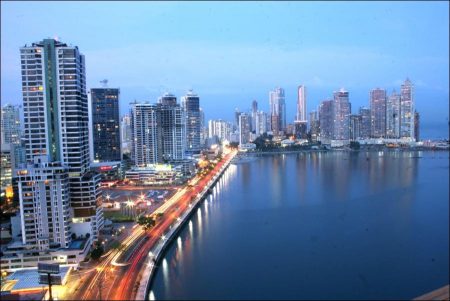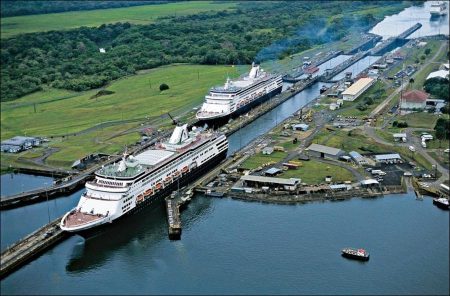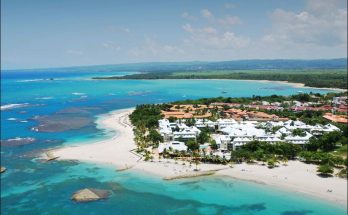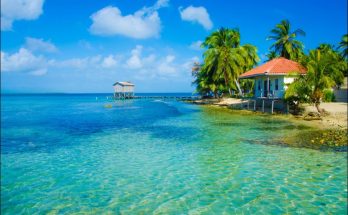Panama, officially called the Republic of Panama (Spanish: República de Panamá), is a country in Central America situated between North and South America. It is bordered by Costa Rica to the west, Colombia to the southeast, the Caribbean to the north and the Pacific Ocean to the south. The capital and largest city is Panama City, whose metropolitan area is home to nearly half of the country’s 3.9 million people.
Panama was inhabited by several indigenous tribes prior to settlement by the Spanish in the 16th century. Panama broke away from Spain in 1821 and joined a union of Nueva Granada, Ecuador, and Venezuela named the Republic of Gran Colombia. When Gran Colombia dissolved in 1831, Panama and Nueva Granada remained joined, eventually becoming the Republic of Colombia.
With the backing of the United States, Panama seceded from Colombia in 1903, allowing the Panama Canal to be built by the U.S. Army Corps of Engineers between 1904 and 1914. In 1977, an agreement was signed for the total transfer of the Canal from the United States to Panama by the end of the 20th century, which culminated on 31 December 2000.
Revenue from canal tolls continues to represent a significant portion of Panama’s GDP, although commerce, banking, and tourism are major and growing sectors. Panama has the second largest economy in Central America and is also the fastest growing economy and largest per capita consumer in Central America. In 2013, Panama ranked 5th among Latin American countries in terms of the Human Development Index, and 59th in the world.
Since 2010, Panama remains the second most competitive economy in Latin America, according to the World Economic Forum’s Global Competitiveness Index. Covering around 40 percent of its land area, Panama’s jungles are home to an abundance of tropical plants and animals – some of them to be found nowhere else on the planet.
Panama Canal
The Panamá Canal (Spanish: Canal de Panamá) is a man-made 48-mile (77 km) waterway in Panama that connects the Atlantic Ocean (via the Caribbean Sea) to the Pacific Ocean. The canal cuts across the Isthmus of Panama and is a key conduit for international maritime trade. There are locks at each end to lift ships up to Gatun Lake, an artificial lake created to reduce the amount of excavation work required for the canal, 26 metres (85 ft) above sea level. The current locks are 33.5 metres (110 ft) wide. A third, wider lane of locks was constructed between September 2007 and May 2016, and is due to open in June 2016.
France began work on the canal in 1881 but stopped due to engineering problems and a high worker mortality rate. The United States took over the project in 1904, and opened the canal on August 15, 1914. One of the largest and most difficult engineering projects ever undertaken, the Panama Canal shortcut greatly reduced the time for ships to travel between the Atlantic and Pacific Oceans, enabling them to avoid the lengthy, hazardous Cape Horn route around the southernmost tip of South America via the Drake Passage or Strait of Magellan.
Colombia, France, and later the United States controlled the territory surrounding the canal during construction. The US continued to control the canal and surrounding Panama Canal Zone until the 1977 Torrijos–Carter Treaties provided for handover to Panama. After a period of joint American–Panamanian control, in 1999 the canal was taken over by the Panamanian government, and is now managed and operated by the government-owned Panama Canal Authority.
Annual traffic has risen from about 1,000 ships in 1914, when the canal opened, to 14,702 vessels in 2008, for a total of 333.7 million Panama Canal/Universal Measurement System (PC/UMS) tons. By 2012, more than 815,000 vessels had passed through the canal; the largest ships that can transit the canal today are called Panamax.[1] It takes six to eight hours to pass through the Panama Canal. The American Society of Civil Engineers has called the Panama Canal one of the seven wonders of the modern world.
Visits: 55




